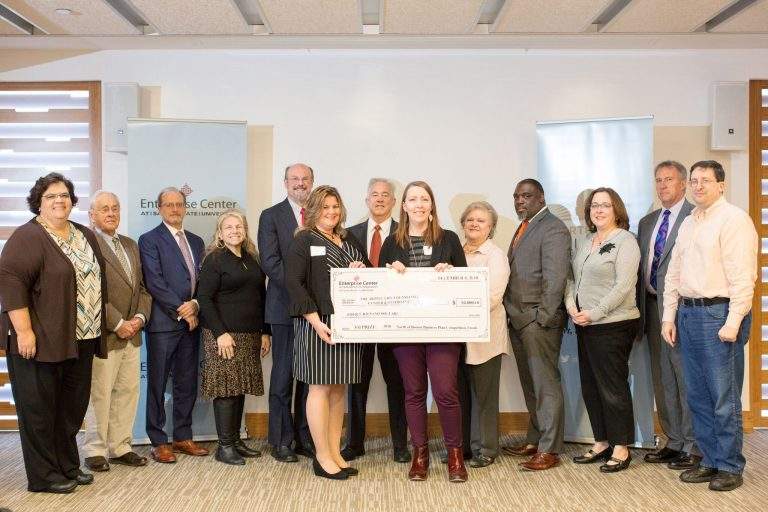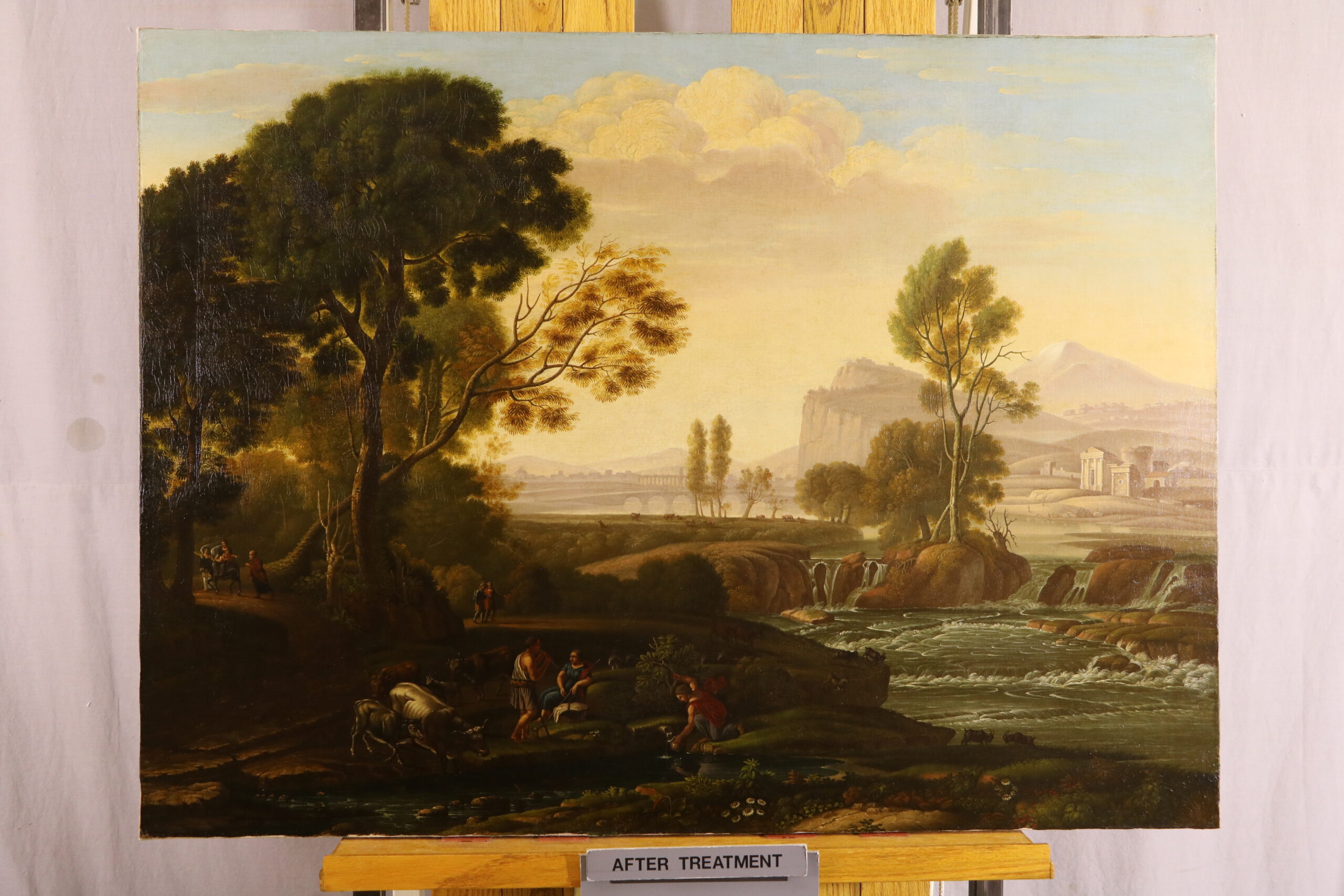

by Joey Phoenix
In December of 2018, the Enterprise Center at Salem State University announced the winners of the North of Boston Business Plan Competition, awarding third prize and a $4,000 grant to The Artful Life Counseling Center & Studio, LLC., a unique company which offers a creative alternative to traditional mental health counseling for individuals on the North Shore and surrounding communities.
This achievement wasn’t something that happened overnight. It was the result of years of collaboration between company co-directors, co-founders, and Expressive Arts Therapists Madelene Pario and Natalie Blue, who, despite having different backgrounds, ended up uniting under a single vision: to provide a new kind of therapy with the process of art-making at its center.


Expressive Arts Therapy combines the visual arts, movement, drama, music, writing and other creative processes to help a person not only express and visualize emotions but also facilitate growth. It’s an alternative to traditional therapy where instead of patients simply talking to therapists about their experiences, they do creative activities that help them tap into the core of their situation, and experience the third-hand nature of art-making as a therapeutic process.
From Education to Expression
Inspired by the book The Artist’s Way by Julia Cameron, Natalie Blue stumbled into Expressive Arts Therapy after many years of dabbling with art and taking art classes and dealing with a bit of career uncertainty before eventually landing in a program at Lesley University in Cambridge, MA.
“I don’t see myself as a professional artist, but I definitely enjoy mixed media,” Natalie said. “I’m more of a maker.”
Where Natalie came at things via a more intellectual path, Madelene’s approach was more formally studio-based. “I always knew that I was going to make art and somehow weave that into making a living,” said Madelene.
Madelene also admitted that while she always wanted to pursue a career in art, therapy was the last thing on her mind. She always pictured it as the less-than-pleasant Freudian stereotype with the doctor sitting in the chair taking notes while the patient lies down and talks until the session is over.
“I wanted to make art but I found the studio kind of a lonely experience.” She explained. “I wanted to have connections with other people, but I didn’t know what that would look like at first.”
When she discovered art therapy, it was as if a whole new world opened up for her, and in realizing that this was going to be her path, she pivoted her career route and applied to the Art Institute of Chicago, which not only offered a grad program in Expressive Arts Therapy but also a studio-based approach. After graduating from the program, Madeline spent a year in Uganda working with a local community organization whose purpose was to help the people in that region express how HIV/AIDS had impacted their community and also give a voice to expressing that to others within the community.
The Birth of The Artful Life
The Artful Life’s journey officially began when Natalie and a colleague opened a private practice next to Green Tea Yoga in Salem. Unlike traditional therapy practices who just need an office with a waiting room, art therapists also need a studio space where their patients can create. The location they found next to the yoga studio was perfect for this purpose, except for the fact that there was an extra office which needed to be filled right away, to help with overhead.


Meanwhile, Madelene had spent a lot of time working for agencies which had left her feeling burnt out and ready for something new. “I wanted to go back to my roots and create an arts-based studio approach.”
It turned out to be a perfect match. Both Natalie and Madelene had a similar vision and sensibility for how to bring art and an art-making experience into their new studio, and after brainstorming ideas, they landed on the name “The Artful Life.”
Initially, The Artful Life followed the more traditional model with each therapist having their own private practice within a shared space, which worked for a while. Then, in 2012, the lease was ending, and their mutual colleague announced that she was moving to Colorado, leaving Madelene and Natalie with a choice.
They chose to expand.
Expressive Arts Therapy in Downtown Beverly
With the change in location, The Artful Life also began to evolve as a company. They opened a new practice on Cabot Street in Beverly that was spacious and had a studio, but more importantly, had twice as many offices as their previous location.
As a result, they brought people in to fill those offices, but the issue was that although these people were therapists, they weren’t art therapists, which created a high turnover rate within the space.
“Referrals kept coming in, but they weren’t calling for these other therapists, they were calling for The Artful Life,” Natalie said. “Everyone was calling for Expressive Arts Therapy.”
Recognizing this shift, Madelene and Natalie realized they needed to change their perspective and create a new space with a focus entirely on the field they both were most interested in.
“When we formed the group practice The Artful Life, LLC in 2016, we decided that our group practice was going to be exclusive to Expressive Arts Therapy,“ Natalie said. “And that’s truly an inclusive piece of who we are and what we do.”
In 2019, The Artful Life is planning another step in their evolution as is excited to begin expanding their reach and to continue their vision in a new space. “We pride ourselves in providing a work environment that is going to help therapists thrive professionally and personally,” Natalie said.
Using Art as Medicine
In Expressive Arts Therapy, instead of beginning with a purely mental approach to therapy, the starting point is the sensory functions of art making. It begins with things you can touch and feel and experience on a tactile level, allowing patients to create new narratives that weren’t previously accessible to them.


“It’s a dialogue with art, a collaboration,” Natalie explains. “You don’t have to actually talk about what’s going on, because it’s not actually as important that we know the ins and outs because [the patient] is the one exploring them.”
“What we do as Expressive Arts Therapists is we pay attention to how trauma and stress and our emotions are stored in our body,” Madelene added. “So we know things on a somatic level, and not just on a cognitive level.”
The idea is based on the fact that patients are more able to relate to metaphor and imagery than to the abstract cognitive concepts that are explored in more traditional settings.
“I do think that the arts play a really pivotal role in helping us embody different experiences and express different feelings,” Madelene explains, “and try out new things, new ways of thinking, new ways of being, and letting different parts of ourselves be able to have more of a voice.”
Expressive Arts Therapy isn’t about the product, it’s about the process. Creating art in a therapeutic setting isn’t about making art that is gallery ready. In fact, most of it will never be shown outside the room its created in because the finished product isn’t the point. Everyone – whether they are a world class artist, a kindergartener, or a banker in their 40s – has the capacity to be creative, and Expressive Arts Therapy gives people a place to explore that part of themselves.
“A lot of time people think expressive arts therapy is just for kids or just for artists, and that is absolutely not the case,” Madelene said. “You can benefit if you are young, old, anywhere in between. There are so many potential ways to use this approach.”
And even more importantly, to be successful in Expressive Arts Therapy, patients don’t have to have any artistic talent whatsoever, all they need is a willingness to try.
“If we can be part of this business competition and create powerpoint slides, then non-artists can be artists,” Madelene said.
Joey Phoenix is a performance artist, pet photographer, and the Managing Editor of Creative North Shore. Follow them on Twitter @jphoenixmedia. If you have an idea for a story, feature, or pictures of adorable llamas, feel free to send them a message at joey@jphoenixmedia.com







